Who can resist lounging and using their phones?
In today’s world, it feels like the phone has become a permanent extension of our hands. But how many times have we ignored the discomfort caused by prolonged phone use? Stiff necks, aching backs, and sore spines are often the price we pay for staying glued to our screens.
One of the most common—and risky—ways we use our phones is side-sleeping. But do we know how dangerous this habit really is?
Side-Sleeping and Mobile Phone Use: Risks to Your Eyesight
Using your phone while lying on your side for long periods can increase the risk of strabismus, also known as crossed eyes. Prolonged pressure on just one eye can cause vision imbalance, dryness, blurred vision, and even headaches from muscle fatigue.
Additionally, many internet posts warn about the dangers of using your phone in the dark, and these aren’t baseless claims. Recent research has shown that using phones in dark environments significantly increases the risk of glaucoma, as the increased intraocular pressure caused by close-up use is a key factor.

How to Lie Correctly When Using Your Phone
If you want to enjoy a more comfortable mobile experience, here’s how to do it properly.
- Start by lying flat with your knees bent. This position helps align your pelvis, reducing pressure on your lower back.
- If you can, use a pillow or cushion to elevate your legs so that your knees are at about a 90-degree angle. This will reduce back strain and promote better circulation in your lower body, preventing swelling.
- As for your arms, try raising them to eye level. Keep the phone about 40 cm from your face. If this feels tiring, place a cushion or pillow under your elbow for support. You can also add a ring holder to your phone for extra security.
- Always use a pillow for neck support to reduce neck strain and give your head some comfort.
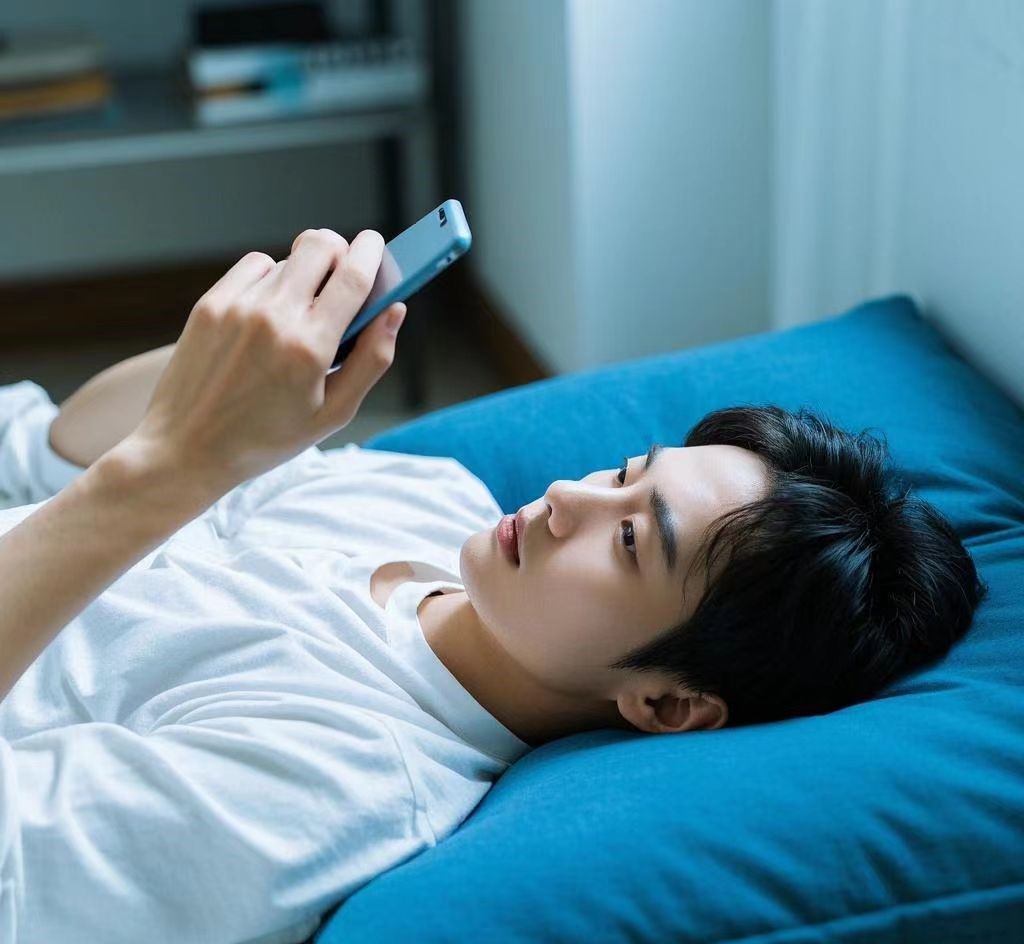
Upgraded Method: The Wall-Supported Technique
If you want an even more advanced position, try lying with your legs up against the wall. This helps boost circulation, reduces swelling, and makes the legs appear slimmer—although, for actual leg slimming, you’ll still need to engage in active exercise. However, don’t hold this position for too long as your legs might go numb.
Prone Position: Not Ideal, But Possible with Adjustments
Though not recommended for prolonged use, you can also use your phone while lying on your stomach. Many of us get so absorbed that we forget to adjust our posture, leading to hunching and craning our necks forward.
Here’s how to do it without harming your posture:
- Keep your arms positioned in front of you with your elbows slightly ahead of your ears.
- Don’t shrug your shoulders. Allow your neck to resist gravity by slightly shifting backward. Keep your scapula engaged to support your upper body.
- Maintain a relaxed waist, and avoid collapsing into a hunched position.

This position is similar to exercises in Dynamic Neuromuscular Stabilization (DNS), which is a rehabilitation technique designed to stabilize the shoulders, trunk, and neck. It mimics the developmental posture babies use when learning to lift their heads, a great way to work on your posture while using your phone.
Correct Sitting or Standing Posture for Using Phones
If sitting or standing, consider using the “Ultraman posture” for holding your phone:
- Use one hand for support, with the phone held in the other hand at about mouth level.
- Keep your head slightly lowered, but your gaze relaxed. This position prevents strain on your neck and shoulders.
- If you have a table or a cushion available, it will make this position even easier and more supportive.
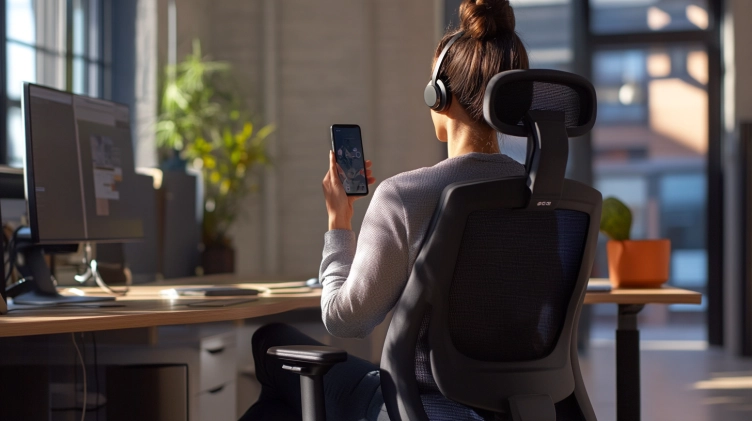
Using Your Phone While Reclining on the Bed or Couch
One major cause of herniated discs is lying in an unnatural position while reading or using your phone, such as slouching with a curved spine.
To prevent this, place a cushion or rolled towel at the lower part of your back (around your belly button). This helps restore the natural curve of your spine and alleviates pressure on the lower back. Avoid slumping or arching your back while using your phone.
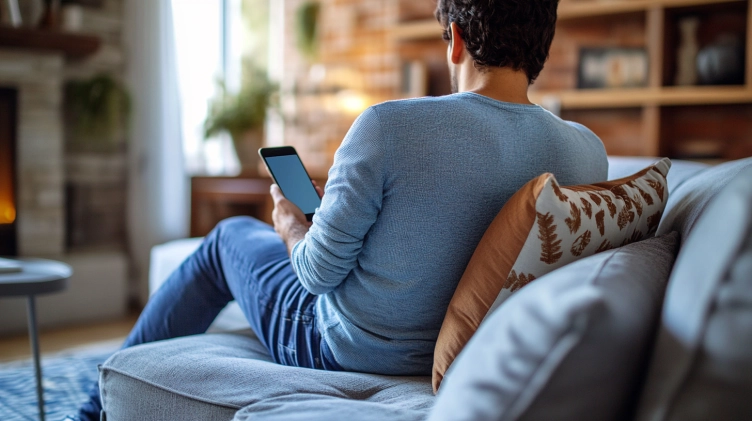
The Worst Phone-Using Postures: A Warning!
Let’s now highlight some positions you should definitely avoid:
- Hanging upside down like a willow: This posture might seem funny but can be incredibly dangerous for your spine and neck.
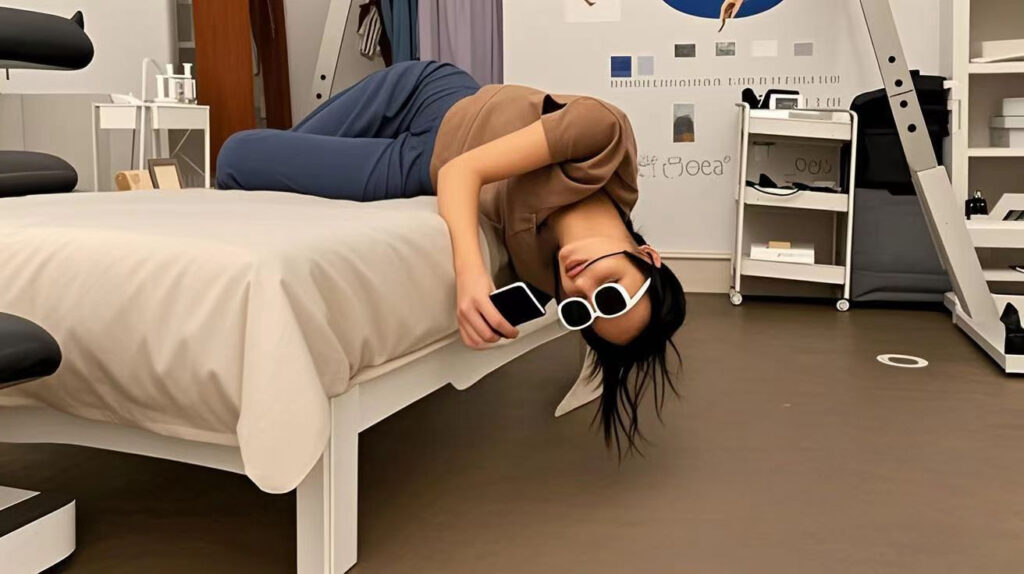
- Eating while using your phone: It’s essential to engage with people around you while eating, not let your phone act as a barrier in conversations.
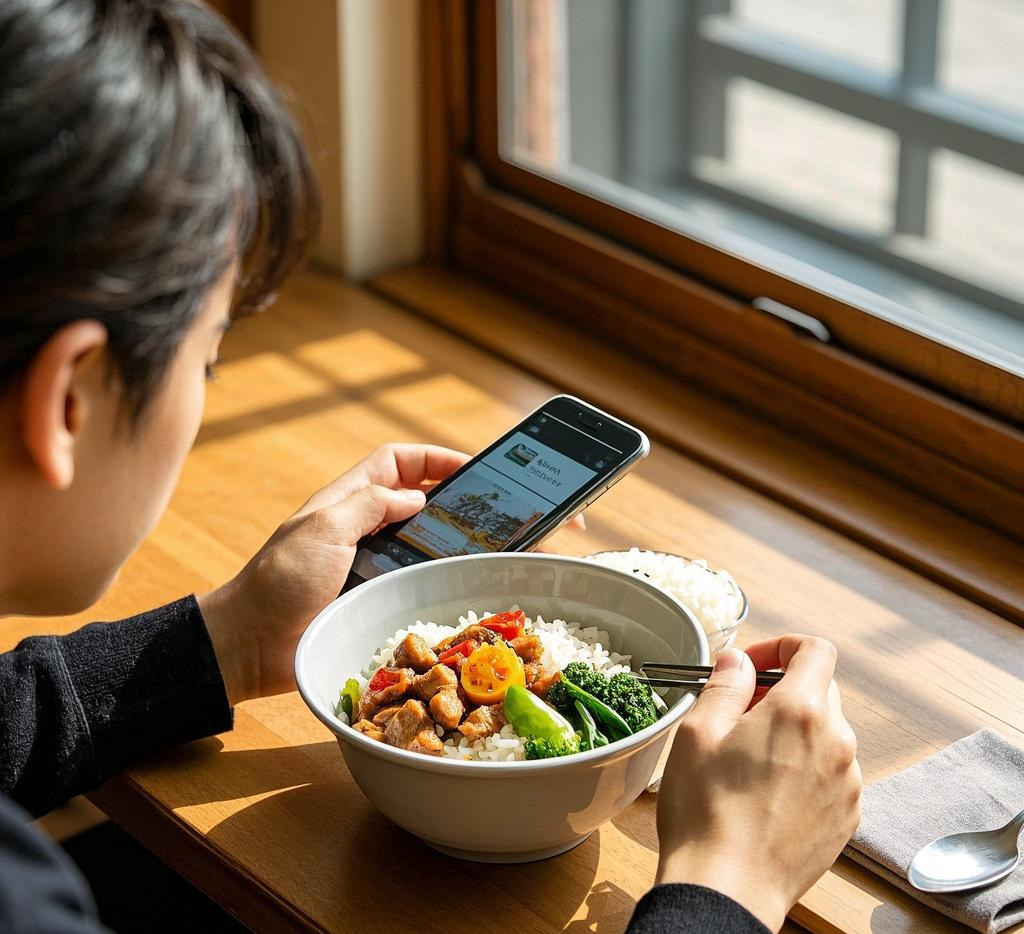
- Using your phone on escalators or elevators: It may seem harmless, but it distracts you from your surroundings and can lead to accidents.
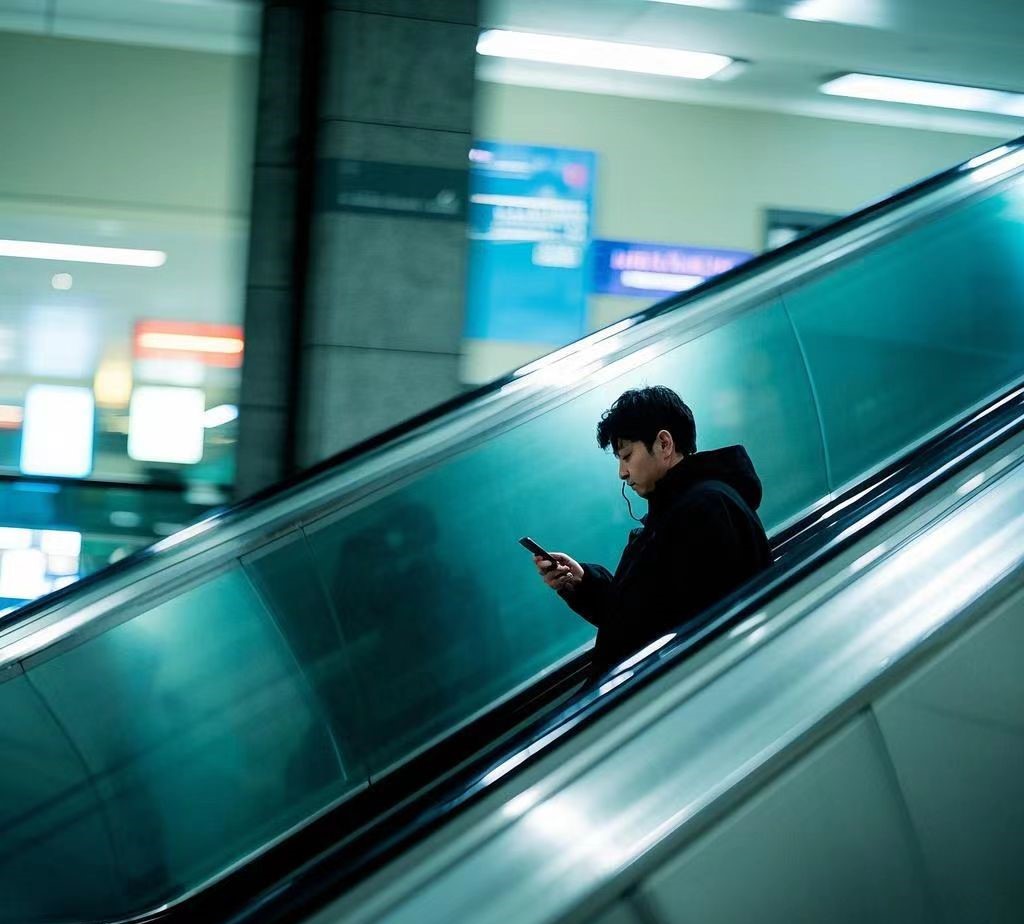
Conclusion
In conclusion, while we all enjoy using our phones, it’s important to be aware of how our posture can impact our health. Adjusting simple habits, like the way we sit, lie, or stand while using our phones, can help prevent long-term discomfort and even serious conditions. By following these simple guidelines, you can reduce strain on your body while enjoying your mobile experience.



















